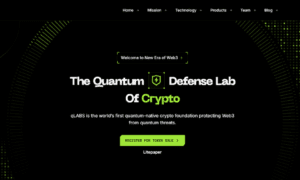Introduction
In today’s digital landscape, businesses and individuals alike are increasingly turning to cloud computing for its convenience, scalability, and cost-effectiveness. However, with this convenience comes the responsibility of ensuring the security of your data and systems. Navigating the cloud securely requires a proactive approach and adherence to best practices. In this article, we’ll explore 10 key tips for ensuring secure computing in the cloud.
Understanding the Cloud Landscape
Before delving into the tips for secure computing in the cloud, it’s essential to have a basic understanding of what the cloud entails. Simply put, the cloud refers to the delivery of computing services—such as storage, processing power, and software—over the internet, rather than from on-premises infrastructure. Cloud services are typically offered by third-party providers who maintain the underlying infrastructure, allowing users to access resources on-demand and pay only for what they use.
Choose a Reputable Cloud Service Provider
When entrusting your data and applications to the cloud, it’s crucial to select a reputable service provider with a track record of reliability and security. Conduct thorough research and consider factors such as data encryption, compliance certifications, and uptime guarantees. Additionally, look for providers that offer transparent security policies and robust access controls.
Implement Strong Access Controls
Effective access controls are essential for preventing unauthorized access to your cloud resources. Utilize strong, unique passwords for each user account, and consider implementing multi-factor authentication for an added layer of security. Regularly review and update user permissions to ensure that individuals only have access to the resources necessary for their roles.
Encrypt Your Data
Encrypting your data both in transit and at rest is a fundamental aspect of cloud security. Ensure that your cloud service provider offers encryption capabilities and configure encryption settings according to your organization’s requirements. By encrypting sensitive data, you can mitigate the risk of unauthorized access or interception by malicious actors.
Monitor and Audit Activity
Continuous monitoring and auditing of cloud activity are essential for detecting and responding to security incidents in a timely manner. Implement robust logging mechanisms to capture details of user actions, system events, and network traffic. Regularly review audit logs for signs of suspicious activity, such as unauthorized access attempts or unusual data transfers.
Keep Software and Systems Updated
Regularly updating software and systems is critical for addressing known vulnerabilities and protecting against emerging threats. Most cloud service providers automatically manage updates for underlying infrastructure, but it’s important to stay vigilant and ensure that your applications and virtual machines are also up to date. Consider implementing automated patch management tools to streamline the update process.
Backup Your Data
Despite the robust security measures in place, data loss can still occur due to unforeseen circumstances such as hardware failures, natural disasters, or cyberattacks. Implement regular data backups to safeguard against loss and ensure business continuity. Store backups securely in geographically diverse locations to mitigate the risk of data loss due to localized incidents.
Educate Users on Security Best Practices
Human error remains one of the leading causes of security breaches, so it’s essential to educate users on security best practices and raise awareness of potential risks. Provide comprehensive training on topics such as password hygiene, phishing awareness, and safe browsing habits. Encourage users to report any suspicious activity promptly and foster a culture of security awareness throughout your organization.
Implement Network Segmentation
Segmenting your cloud network into distinct zones based on security requirements can help limit the scope of potential security incidents and prevent lateral movement by attackers. Implement firewalls and access control lists to restrict traffic between zones and enforce the principle of least privilege. Regularly review and update network segmentation policies as your infrastructure evolves.
Perform Regular Security Assessments
Regular security assessments, such as penetration testing and vulnerability scanning, are essential for identifying and remediating potential security weaknesses in your cloud environment. Partner with experienced security professionals or utilize automated tools to assess your infrastructure’s resilience to various attack vectors. Address any identified vulnerabilities promptly to reduce the risk of exploitation.
Stay Informed and Evolve
The cybersecurity landscape is constantly evolving, with new threats emerging regularly. Stay informed about the latest security trends, advisories, and best practices through industry publications, online forums, and professional associations. Continuously evaluate and adapt your cloud security strategy to address evolving threats and protect your organization’s valuable assets.
Conclusion
Securing your computing environment in the cloud requires a proactive and multifaceted approach. By following the tips outlined in this article, you can minimize the risk of data breaches, unauthorized access, and other security incidents. Remember to choose a reputable service provider, implement strong access controls, encrypt your data, and stay vigilant through monitoring and auditing. With careful planning and adherence to best practices, you can navigate the cloud securely and confidently leverage its benefits for your organization’s success.



































